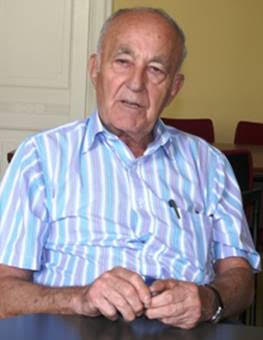
THE VOICE OF INTERNATIONAL LITHUANIA
|
VilNews has its own Google archive! Type a word in the above search box to find any article.
You can also follow us on Facebook. We have two different pages. Click to open and join.
|
Author Archive
- Posted by - (6) Comment
Open letter to Mayor Zuokas from Gene Emmer:
We need playgrounds
in Vilnius Old Town!

Dear Mayor Zuokas,
I live in the Vilnius old town with my wife and young child. We have a small family business and are very happy here. Yet, one thing that concerns us very much is the lack of quality, safe play areas for young children in Vilnius old town. Within the old town there are basically three playgrounds:
Sereikiškės Park: There used to be two play areas. But one was in very bad condition and was removed. The play area which remains is currently the best in the area. But in nice weather it is generally completely full of children.
Vilniaus Gatve: Last year a small wooden park was built near the Šv. Kotrynos Church. It is very simple wooden play area and already needs repairs.
Vokieciu Gatve (behind the Post Office): This is a rundown, playground in very bad condition. It is a night time hangout for drunks and is always full of trash, broken bottles and animal droppings.
As you know, the children of the old town have very few options to walk to recreation, get exercise and breathe fresh air. I was excited to learn recently that you have decided to improve and build several new parks in Vilnius!
https://www.vilnius.lt/index.php?2299572594
This is EXCELLENT news and I would like to congratulate the city administration for reaching this important decision. However, I would like to make sure that this excellent effort will include several high quality parks IN as well as NEAR the old town. Here are the reasons:
* Children living in the old town need to be able to walk to recreation areas.
* The current recreation facilities in and near the old town are inadequate.
* It is well established that Children's entertainment AT THE VENUE of travel can have a positive effect on family tourism
See this article about why family tourism is more important than ever. First, family tourism is growing. The average family takes at least one holiday per year. And second, as the article says, "The children within today’s families are the customers of tomorrow. Their consumption, experiences and enjoyment will shape the way they structure their own family holidays in years to come." As you can see from the article children's entertainment at the venue can have a large consideration for family destinations:
http://www.insights.org.uk/articleitem.aspx?title=Family+Tourism
Mayor Zuokas, I am hoping that you will use some of the new playground funds to:
* Build several quality playgrounds in and near the old town, at least one that is accessible for disabled children and one that is accessible in the winter (that is, with some protection from the snow). For example, on Rudininku skveras, Vokieciu (behind the post), Konstantino sirvydo skveras, at the foot of Maironio street hill (opposite from Tymo market, under the old Misijonierių hospital) – the place highly popular with kids during winter time due to sledging, so it would be nice to make it attractive year-round. And being an open well-lit area it would be least prone to become a hang-out for vandals/drunks.
* Build a very high quality playground in Sereikiškės Park, perhaps where the old carousel used to be.
These facilities will be healthy, not only for the children residing in the old town, but also for the struggling tourism industry of Vilnius.
Gene Emmer
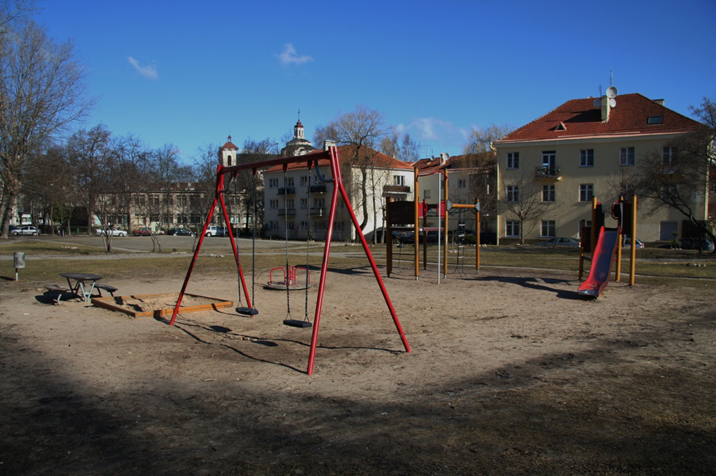
Vokieciu Gatve (behind the Post Office): This is a rundown, playground in very bad condition. It is a night time hangout for drunks and is always full of trash, broken bottles and animal droppings.
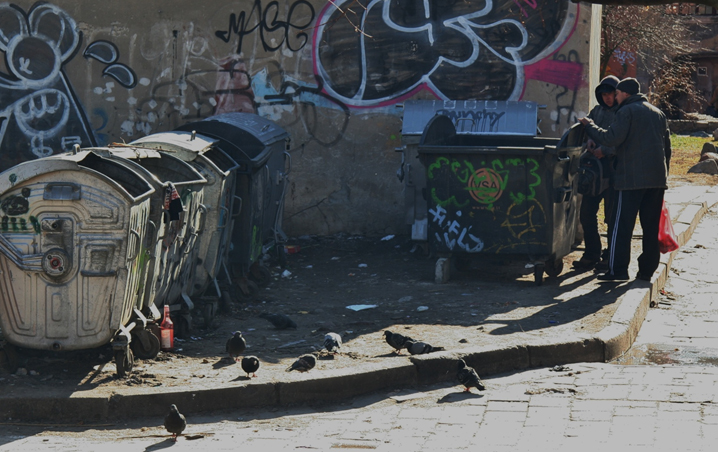
These waste containers are located just 50 meters from the playground at Vokieciu g.. They are a favorite haunt for the homeless and others in search of food residues.
- Bookmark :
- Digg
- del.icio.us
- Stumbleupon
- Redit it
- Posted by - (0) Comment
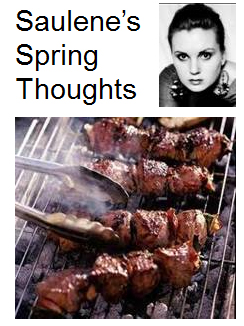
Craving for a barbeque
on a Lithuanian lakeside
Text: Saulene Valskyte
Dark gray days and cold nights are finally over and spring/summer has made its way back to Lithuania. Just a few weeks ago you still could've found some remains of snow, but now the sun made her way back and it looks that everybody became happier over night.
After a long rainy autumn and an even longer cold dark winter, people were praying for spring to come back and when it did it looks like everyone is trying to catch up on all summer activities on the very first weekend.
Lakes take the biggest role in Lithuanian summer. Over winter everyone is just craving for barbeque on a lakeside and we do make sure that the very first summery sunshine will be welcomed somewhere in nature enjoying good weather and šašlykai*. Even when the weather is still quite chilly and only dropping clues about upcoming spring fills streets with bicycles and relaxed pedestrians, it looks like for months and months people were waiting for a chance to get out of their homes and finally they get the possibility to do that. In a matter of days parks fill up with lovely couples, young families and youth playing ball, cards or just chilling on barely sprouted grass.
- Bookmark :
- Digg
- del.icio.us
- Stumbleupon
- Redit it
- Posted by - (6) Comment

Craving for a barbeque
on a Lithuanian lakeside
Text: Saulene Valskyte
Dark gray days and cold nights are finally over and spring/summer has made its way back to Lithuania. Just a few weeks ago you still could've found some remains of snow, but now the sun made her way back and it looks that everybody became happier over night.
After a long rainy autumn and an even longer cold dark winter, people were praying for spring to come back and when it did it looks like everyone is trying to catch up on all summer activities on the very first weekend.
Lakes take the biggest role in Lithuanian summer. Over winter everyone is just craving for barbeque on a lakeside and we do make sure that the very first summery sunshine will be welcomed somewhere in nature enjoying good weather and šašlykai*. Even when the weather is still quite chilly and only dropping clues about upcoming spring fills streets with bicycles and relaxed pedestrians, it looks like for months and months people were waiting for a chance to get out of their homes and finally they get the possibility to do that. In a matter of days parks fill up with lovely couples, young families and youth playing ball, cards or just chilling on barely sprouted grass.
I work in a big shopping mall AKROPOLIS and last weekend it had its big birthday celebration with huge discounts and special offers for costumers, big prizes were up for grab, but does anyone care about it? That weekend we were rewarded with magical weather of +27 and it was so sunny, and warm breezes were flowing around so despite Lithuanians passion for shopping, everybody was commonly running from town. During that weekend lakesides were filled with people and in the mean time AKROPOLIS was almost empty.

I can’t describe the image that stuck in my head that Friday afternoon. Traffic in Ozas street, which is a huge 4 lane street, was impossible. Cars were barely moving in the direction that leads from the city centre. It looked like a massive evacuation. During the normal commuter rush hour there are half that many cars as it there was then. During all the weekend Vilnius centre was almost totally empty….
Another important thing about Lithuania and good weather is that most Lithuanians own some kind a piece of land that they use for growing vegetables or gardening. Small gardens somewhere near cities are very popular in Lithuania. People have small summer houses with only a few rooms there with a little piece of land for gardening and to escape for the weekend. Others have relatives living in the countryside. So in spring, most Lithuanians spend their time working the land and preparing it for “farming”. I find it funny when in Vilnius you can’t find friends to meet for a drink because everybody is planting potatoes.
The perfect Lithuanian evening after a hot summer day is sitting on bench somewhere in a park or on a lakeside and enjoying cold beer-we sure do love beer during the summer. So grab some friends, beer and if possible šašlykai and visit the nearest lakeside to enjoy what nature gives you and what we really do know how to apriciate.


*Šašlykai is originally an Armenian dish, but it is one of the most popular dishes during summer or any kind of camping. In Lithuania it’s usually made from pork (lamb originally). It’s small pieces of meet marinated with some vinegar, onions and some of this and that (this and that depends from the cook).

Happy Spring Days! From Saulene.
- Bookmark :
- Digg
- del.icio.us
- Stumbleupon
- Redit it
As vast as the waves of Lithuanian immigrants who crossed the ocean to start new lives thousands of miles from their native land
- Posted by - (0) Comment
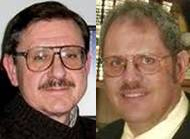
Boris Vytautas Bakunas (left)
has much good to say about
Frank Passic’s “Chicago
article” here in VilNews
(See Section 11)
Dear Mr. Frank Passic,
How can I thank you for your article How Chicago Became Lithuania’s Second Capital?
Its scope is as vast as the waves of Lithuanian immigrants who crossed the ocean to start new lives thousands of miles from their native land. .
Until I read your article, I didn’t know that Bridgeport, the Chicago neighborhood, where I spend the happiest years of my childhood, is said to have gotten its name from Ansas Portas, who owned land on the south side of the Chicago River.
Nor did I know of the 18 men who were the first Lithuanians to set foot on Chicago as part of a railway crew. I can easily imagine the grime on their faces and their calloused hands as they trudged home to their families after toiling all day in the railroad yards.
Nor was I aware of the small token “chips” that struggling Lithuanian societies issued in order to raise meager sums to support the building of their cultural institutions. Those meager sums added up and helped pay for the bricks that built institutions where Lithuanians gathered to preserve their customs and worship in their native tongue.
Your article is a source of inspiration for all Lithuanians and their descendants. It shows how fiercely Lithuanian immigrants fought to preserve their cultural heritage. With little money but with great determination, they established organizations, published Lithuanian newspapers, built churches, schools, and centers of culture.
- Bookmark :
- Digg
- del.icio.us
- Stumbleupon
- Redit it
As vast as the waves of Lithuanian immigrants who crossed the ocean to start new lives thousands of miles from their native land
- Posted by - (0) Comment

Boris Vytautas Bakunas (left)
has much good to say about
Frank Passic’s “Chicago
article” here in VilNews
Dear Mr. Frank Passic,
How can I thank you for your article How Chicago Became Lithuania’s Second Capital?
Its scope is as vast as the waves of Lithuanian immigrants who crossed the ocean to start new lives thousands of miles from their native land. .
Until I read your article, I didn’t know that Bridgeport, the Chicago neighborhood, where I spend the happiest years of my childhood, is said to have gotten its name from Ansas Portas, who owned land on the south side of the Chicago River.
Nor did I know of the 18 men who were the first Lithuanians to set foot on Chicago as part of a railway crew. I can easily imagine the grime on their faces and their calloused hands as they trudged home to their families after toiling all day in the railroad yards.
Nor was I aware of the small token “chips” that struggling Lithuanian societies issued in order to raise meager sums to support the building of their cultural institutions. Those meager sums added up and helped pay for the bricks that built institutions where Lithuanians gathered to preserve their customs and worship in their native tongue.
Your article is a source of inspiration for all Lithuanians and their descendants. It shows how fiercely Lithuanian immigrants fought to preserve their cultural heritage. With little money but with great determination, they established organizations, published Lithuanian newspapers, built churches, schools, and centers of culture.
They worked in sweat shops and labored in the Chicago Stock Yards. They fought beside their fellow workers to unionize the Meat Packing Industry.
My gratitude extends far beyond the historical knowledge you conveyed.
The words you wrote and the photographs you posted stirred my memory. My my mind flooded with names and stories of Lithuanians who fled their native soil to escape exile, execution, or torture in 1944.
The sky is gray and overcast in Chicago as I write. Why do I feel it should be raining? Do I want the rains to come and wash away those memories of misery and pain?
My mother and grandparents rarely talked about the Second World War and its aftermath. The questions my half-sister and I asked were often met with curt answers like “Those were terrible times.”
But we kept asking, and over the years, when family and friends had gathered together to celebrate holidays, we snatched bits and pieces of conversations that helped us form a mosaic of the hidden past.
I remember how fortunate my grandparents and mother said they felt to have caught the last train leaving Lithuania in August of 1944.
I remember hearing how the train, carrying both troops and civilians, was strafed by a fighter plane. The train screeched to a halt. People rushed from the railway cars and scattered to hide in the fields.
When the strafing ended, my mother turned to her side and saw that the body of a German soldier beside her -- his body sliced in two by bullets. He was one of several who had tried to shield her with their own bodies.
I remember being told that my mother screamed hysterically for nearly an hour. . Then she fell silent and did not whisper a word for a month.
I remember my godmother telling me how she and her husband fled their home when they heard the roar of Soviet cannons. They rushed to a neighbor’s house. They handed their infant daughter to the woman who lived in the house. “We will hide in the woods. When the front passes, we will come back for her.”
But the battle intensified. The bomb blasts grew louder, pushing my godparents further and further from home. More than thirty years had to pass before mother and daughter were reunited again.
I have no memories of the displaced person’s camp in Germany where I was born. But I remember being told that an American soldier, a Black G.I., lifted me in his arms and gave me chocolate. My mother laughed as she told me how I asked if he was made of chocolate.
I remember Ponia Aldona Konciene, an enormous woman with a heart as big as her bulk. She and her husband were among the first from our D. P. camp to come to America. Despite their poverty, they sponsored dozens of other Lithuanians, often sharing their small apartment with them for weeks at a time.
I remember the actor Alfonsas Brinka and the heavy load he had to bear to support his family at a backbreaking menial job. Yet he always found time to amuse children with his stories, both in person and on the Lithuanian radio show “Margutis.”
I remember the poet Apolinaras Bagdonas. He worked as a desk clerk in a hotel during the week, and taught at the Lithuanian Saturday school I attended. A man of extraordinary gentleness, he didn’t have the heart to yell or punish us when we misbehaved. He would only pause with a look of sadness on his face. On Friday evenings, he’d host gatherings for us and sit quietly as we talked about sports, The war in Vietnam, and our hopes for the future.
The Saturday sky is still gray, but the rain has not come. Names, faces, images flood my mind. I am glad that the rains have not washed my memories away.
Mr. Passic, thank you again.
Dr. Boris Vytautas Bakunas
- Bookmark :
- Digg
- del.icio.us
- Stumbleupon
- Redit it
Dalia Grybauskaite intends to visit former Prime Minister of Ukraine, Yulia Tymoshenko, in prison
- Posted by - (0) Comment
![]()

Former Prime Minister of Ukraine,
Yulia Tymoshenko
President of Lithuania Dalia Grybauskaite intends to visit in Kharkiv former Prime Minister of Ukraine, Yulia Tymoshenko, the leader of the Batkivschyna Party, ahead of the summit of presidents of the Central Europe to be held in Yalta (Crimea) on May 11 and May 12.
Ukrainian News learned this from a statement by the press service of the President of Lithuania.
"On the way to the summit of Central Europe in Yalta President of Lithuania Dalia Grybauskaite will arrive in Kharkiv to meet with a convicted former Prime Minister of Ukraine Yulia Tymoshenko," reads the statement.
According to the statement, the President of Lithuania discussed the question of meeting with Yulia Tymoshenko during a phone conversation with President of Ukraine Viktor Yanukovych.
According to the statement, Dalia Grybauskaite said the human rights is the major European value and as far as Ukraine has taken the European path, it has to observe the rights, including the right to adequate medical treatment of all citizens, including Yulia Tymoshenko.
The President of Lithuania wished President Viktor Yanukovych to retain the European perspective for Ukraine as the perspective is important and useful to both Ukraine and the European Union.
In case of Ukraine's isolation the European perspective will be delayed, she said.
As Ukrainian News earlier reported, President of Lithuania Dalia Grybauskaite expressed the wish to take part in the summit at a meeting with Prime Minister of Ukraine Mykola Azarov in Vilnius in April.
- Bookmark :
- Digg
- del.icio.us
- Stumbleupon
- Redit it
Ukraine angrily scraps Yalta summit planned for 11 – 12 May week after most participants pulled out in protest over the treatment of jailed opposition leader Yulia Tymoshenko
- Posted by - (0) Comment
![]()
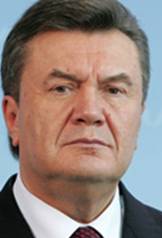
The summit, originally set to be hosted by President Viktor Yanukovych in the Crimean resort of Yalta on Friday and Saturday, was to be a showpiece event one month before Ukraine co-hosts the Euro 2012 football.
Ukraine on Tuesday shelved a summit of Central European leaders it was to host this week after most participants pulled out in protest over the treatment of jailed opposition leader Yulia Tymoshenko.
The summit, originally set to be hosted by President Viktor Yanukovych in the Crimean resort of Yalta on Friday and Saturday, was to be a showpiece event one month before Ukraine co-hosts the Euro 2012 football.
"In connection with the fact that a number of European leaders are unable to take part in the Yalta summit for different reasons, Ukraine has decided to postpone it to a later date," the foreign ministry said in a statement.
"It will be held at a later date to be decided through diplomatic channels," it added.
At least 10 EU leaders had officially announced they would not be attending the summit, leaving Yanukovych facing the prospect of hosting an embarrassingly lonely meeting with a handful of fellow heads of state.
EU heavyweight Germany was the first country to announce a boycott, although Ukraine's Euro co-host Poland had steadfastly insisted that it would be attending.
The EU Commission has said all EU commissioners will also boycott matches hosted by Ukraine in the Euro itself and Germany has not ruled out such a move for its ministers, in what would be a huge blow to Ukraine.
Tymoshenko was jailed for seven years in October on charges of abuse of power while in office, after a trial that was bitterly criticised by the West as appearing politically motivated.
The controversy has intensified in recent weeks as the countdown begins to the championships, with Tymoshenko going on hunger strike and claiming to have been beaten by guards at her prison in Kharkiv.
- Bookmark :
- Digg
- del.icio.us
- Stumbleupon
- Redit it
- Posted by - (3) Comment
|
Come celebrate with me Mother’s Day in Lithuania
Text/photos: Aage Myhre
I was up very early today, to drive the 200 kilometers (125 mi.) to Jurbarkas town, where mothers and grandmothers of my wife's family are buried.
A sunny day, a fantastic backdrop for the celebration and commemoration to the honour of these proud Lithuanian women.
You are cordially invited to join the tour and see some of the pictures I took in this incredibly beautiful cemetery ...
Lithuanians celebrate Mother’s Day on the first Sunday of May every year...
Traditionally, the first thing in the morning of this day is to go to the cemeteries to commemorate all deceased mothers. This is followed by a traditional family dinner, where all present mothers are honoured with a cake, which resembles a bouquet of flowers. Mother’s Day is the day to acknowledge our mother’s unconditional love, support, and the efforts in raising her kids.
Did you, by the way, know that the mother’s day celebration has existed since ancient times? It is believed that the Greeks celebrated Mother’s Day in spring, by honouring Rhea, ‘mother of the gods’, by offering honey-cakes, flowers and drinks. This day is celebrated across the globe though on different dates. Similarly, celebrations also vary from country to country.
Proud grandpa with who happy granddaughters, my daughters. Cornelia, Bruno and Cassandra.
.
Finally time for the great, annual family dinner!!!
|
- Bookmark :
- Digg
- del.icio.us
- Stumbleupon
- Redit it
- Posted by - (0) Comment
No LT leaders called
to say they love me
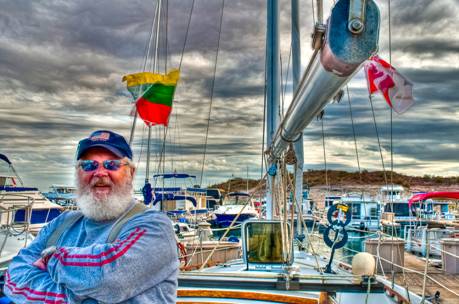
Rimgaudas P. Vidziunas aka "Rim", at Scorpion Bay Marina,
Lake Pleasant, Arizona.
Rimgaudas "Rim" Vidziunas
Owner of Photography by Rimgaudas, Mesa, Arizona
Creator of "Images and Imagination"
This is Rimgaudas' brief autobiography and photo album, from his birth in a German camp for displaced Lithuanians in 1947, fleeing westward with his family until he ended up in Arizona, USA. His story is similar to those of many other Lithuanian-American children who were born while their parents fled Stalin's Red Army. Rim has been back in his parents' homeland and do much to keep the memory alive. Still it is with a certain soreness he answers NO when I ask if he ever heard from the Lithuanian authorities. Not a single letter, no phone call from the home country's leaders. No one from home has told Rim and many other refugee children that they are loved by the ancestral homeland, that they are welcome back now that the communism yoke is lifted off. It seems, unfortunately, that today’s Lithuanian leadership has not done much to restore contact with this most valuable of all resources, namely its own people around the globe.
Here is his story...
My father Juozas Vidziunas escaped Pramedziava, Lithuania during the Soviet invasion of 1941. He went to Germany and there he studied Medicine at the University of Heidelberg. Juozas met Salomeja while he was a student. My mother, Salomeja worked as a hostess at a US Army USO club after the war in Germany. They were given a visa to go to the United States in 1949.
Parents did not talk about their escape from Lithuania to Germany.
I was born in 1947, and when I was two were allowed to come to the U.S. We came here with the ship USS General Sturgis, a US Army troop carrier. After dropping off troops in Germany it would carry refugees back to the United States. We left Bremen Germany, arriving Port of New Orleans 13 March 1949.
The Army Red Cross gave us each $5.00 US dollars and boarded us on a train bound to Los Angeles, California. We were met by my father's brother Juonas Vidziunas and cousin Daiva. We lived with them till 1952 and departed for Chicago, Illinois. Several years later we moved to a small farming community Lexington, Illinois about 120 miles southwest of Chicago. I graduated high school from Lexington, was Senior Class President and graduated University of Miami, Florida, BA History, January 1970.
I returned to the Midwestern United States upon graduation. My love of photography began. On a trip to Arizona in 1974, I fell in love with the desert and moved to Arizona in 1978. I continue my art of photography to this day.
- Bookmark :
- Digg
- del.icio.us
- Stumbleupon
- Redit it
- Posted by - (17) Comment
No LT leaders called
to say they love me

Rimgaudas P. Vidziunas aka "Rim", at Scorpion Bay Marina,
Lake Pleasant, Arizona.
Rimgaudas "Rim" Vidziunas
Owner of Photography by Rimgaudas, Mesa, Arizona
Creator of "Images and Imagination"
This is Rimgaudas' brief autobiography and photo album, from his birth in a German camp for displaced Lithuanians in 1947, fleeing westward with his family until he ended up in Arizona, USA. His story is similar to those of many other Lithuanian-American children who were born while their parents fled Stalin's Red Army. Rim has been back in his parents' homeland and do much to keep the memory alive. Still it is with a certain soreness he answers NO when I ask if he ever heard from the Lithuanian authorities. Not a single letter, no phone call from the home country's leaders. No one from home has told Rim and many other refugee children that they are loved by the ancestral homeland, that they are welcome back now that the communism yoke is lifted off. It seems, unfortunately, that today’s Lithuanian leadership has not done much to restore contact with this most valuable of all resources, namely its own people around the globe.
Here is his story...
My father Juozas Vidziunas escaped Pramedziava, Lithuania during the Soviet invasion of 1941. He went to Germany and there he studied Medicine at the University of Heidelberg. Juozas met Salomeja while he was a student. My mother, Salomeja worked as a hostess at a US Army USO club after the war in Germany. They were given a visa to go to the United States in 1949.
Parents did not talk about their escape from Lithuania to Germany.
I was born in 1947, and when I was two were allowed to come to the U.S. We came here with the ship USS General Sturgis, a US Army troop carrier. After dropping off troops in Germany it would carry refugees back to the United States. We left Bremen Germany, arriving Port of New Orleans 13 March 1949.
The Army Red Cross gave us each $5.00 US dollars and boarded us on a train bound to Los Angeles, California. We were met by my father's brother Juonas Vidziunas and cousin Daiva. We lived with them till 1952 and departed for Chicago, Illinois. Several years later we moved to a small farming community Lexington, Illinois about 120 miles southwest of Chicago. I graduated high school from Lexington, was Senior Class President and graduated University of Miami, Florida, BA History, January 1970.
I returned to the Midwestern United States upon graduation. My love of photography began. On a trip to Arizona in 1974, I fell in love with the desert and moved to Arizona in 1978. I continue my art of photography to this day.
My parents never talked much about Lithuania other than my grandfather Petras was a land owner and was deported to Siberia. Father did stay in contact with a younger brother and four sisters that remained in Lithuania. I vacationed in Lithuania 1999 and 2002 and was told I "speak Lithuanian with an American accent"
My love for photography
I was eleven years old when I snapped my first pictures of my German Sheppard with a Kodak Brownie box camera. In the darkroom, magically, images appeared, literally right before my eyes—my passion for photography was born. I had captured a special moment in time and preserved its images, as I had perceived them.
Perhaps it's my ancestral calling, as my family's history is rooted in Lithuania where my name, Vidziunas, has the Latin root “is-vysti” which means "to see more clearly with perception." My Lithuanian tribal ancestors worshipped nature, believed in fairies, wood nymphs and devils; and always obeying the god of thunder, Perkunas.
As a resident of Arizona for over thirty-three years, I've immersed myself in capturing its diverse landscape and natural wonders. By combining my unique perception, images and imagination with the basic principles of abstraction, composition, subject matter, and texture, my photography has developed a distinct style all its own. Browse some of my recent images of Historic Route 66 on Arizona Highway’s Blog.
Whatever my subject or inspiration is, thank you for enjoying Images and Imagination Photography by Rimgaudas. As a member of the Professional Photographers of America, AZ HDR Photography Group, AZ Photographers Group and an ever-developing fine art photographer/photojournalist, I encourage feedback and questions regarding my creative work. Please feel free to join me on LinkedIn, http://www.flickr.com/photos/rimgaudas/, or http://Facebook.com/PhotographybyRimgaudas.
Email rvidziunas@yahoo.com.
Thank you for enjoying my “images and imagination”.

My Parents, Salomeja and Juozas Vidziunas
on their Wedding Day in Lithuania

I was born Rimgaudas Daumantas Petras Vidziunas, in a Lithuanian displaced person’s camp,
Stetten im Remstal, Germany, 9 April 1947

On the ship USS General Sturgis heading for America, Rimgaudas, Salomeja Vidziunas, Rim being fed orange by an unidentified passenger. We were given oranges to eat to prevent scurvy.

Center Salomeja Vidziunas, right Rimgaudas Vidziunas, topside USS General Sturgis

Rimgaudas and cousin Daiva Vidziunas. My first home, Santa Monica, California, 1950

My first portrait, Rimgaudas Vidziunas, Santa Monica, California, 1951

Rimgaudas P. Vidziunas, Photographer

Rimgaudas, Superstition Mountains, Arizona
- Bookmark :
- Digg
- del.icio.us
- Stumbleupon
- Redit it
- Posted by - (0) Comment
Come celebrate with me
Mother’s Day in Lithuania
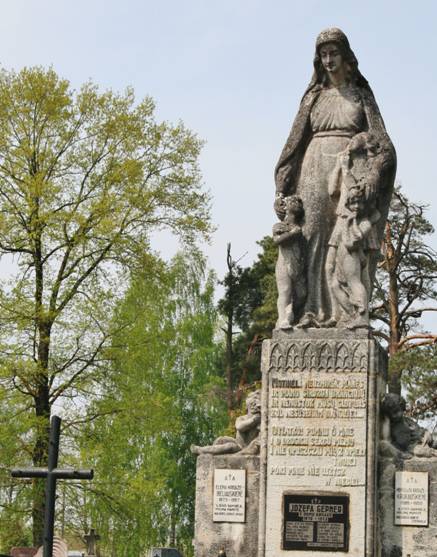
Impression from my today’s visit to the Jurbarkas Cemetery.
Text/photos: Aage Myhre
aage.myhre@Vilnews.com
I was up very early today, to drive the 200 kilometers (125 mi.) to Jurbarkas town, where mothers and grandmothers of my wife's family are buried.
A sunny day, a fantastic backdrop for the celebration and commemoration to the honour of these proud Lithuanian women.
You are cordially invited to join the tour and see the pictures I took in this incredibly beautiful cemetery ...
- Bookmark :
- Digg
- del.icio.us
- Stumbleupon
- Redit it
- Posted by - (0) Comment
How Chicago became
Lithuania’s second capital
PLUS EARLY 20th CENTURY LITHUANIAN-AMERICAN
SOCIETY TOKENS OF CHICAGO, ILLINOIS
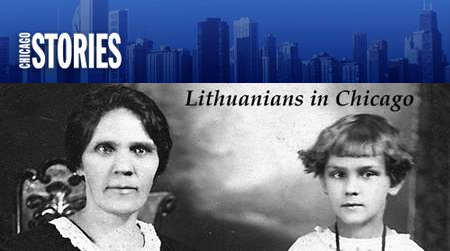
Banner from the website http://www.wttw.com/main.taf?p=1,7,1,1,26
By Frank Passic, Albion, Michigan.
When Lithuania came under Russian control in 1795, the Russians did all they could to “Russify” the Lithuanians, but they were continually met with stiff opposition. During the last half of the 19th Century, oppression increased as parochial schools were closed and Lithuanian printed matter was forbidden. Repressive measures were forced upon the people by the Czar, adding to the misery of the Lithuanian nation which already suffered from famine and mass unemployment.
As a result, thousands of Lithuanians fled their homeland in the late 19th and early 20th centuries prior to World War I. Emigration to America eventually totaled 635,000 individuals, approximately 20 percent of the population of Lithuania! Lithuanians arrived at Ellis Island impoverished, penniless, and unable to speak the English language but full of hope – the hope of freedom, a new life and unlimited opportunity.
Helping the Lithuanian immigrant was the Brooklyn Chapter of the Lithuanian Alliance of America, which gave aid to those at Ellis Island. The Brooklyn Lithuanian-American Citizens Club held a special conference in May of 1911 to plan a strategy for helping those who were scheduled for deportation back to Lithuania. The No. 4 issue of Tevyne (1896) stated, “At present, masses of Lithuanian emigrants are arriving in New York. Every ship from Hamburg brings tens and hundreds of Lithuanians. Many are sent back and the Alliance’s Brooklyn Chapter is working its hardest for the good of those poor peoples…”
In general, the immigrants stayed in New York only briefly, then moved westward to Pennsylvania, where they found employment building railroads and working the coal mines. Numerous Lithuanian organizations, newspapers, and societies were organized in Pennsylvania. These served as the prelude to those that were to be established later in Chicago as Lithuanian immigrants moved westward. Many Chicago societies were actually branches of those that were first established in Pennsylvania.
The first group of Lithuanians came to Chicago in 1870, when eighteen men arrived with a railroad crew. Because of its central location with industry and development, Chicago became the goal of the thousands of impoverished Lithuanian immigrants seeking a new life. Groups of Lithuanians came in 1880 and 1885, with the first colony being established on the North side of the city. After that, the influx of Lithuanians to Chicago grew at an enormous rate. It is estimated that between 1880 and 1914 more than 47,000 Lithuanians settled in the city, congregating in the Bridgeport and Town of Lake districts. By 1923, the Lithuanian population had grown to over 90,000, confirming the fact that Chicago contained the largest Lithuanian population of any city in the world, even more than Kaunas, Lithuania.
According to one story, the Bridgeport section, where many Lithuanians settled, was supposedly named after a Lithuanian immigrant from Tilsit (East Prussia/ Lithuanian Minor) named Ansas Portas. Portas owned land on the south side of the Chicago River at a bridge crossing, and people referred to the area as the “bridge to Portas,” which was later changed to Bridgeport. The Bridgeport section served as the nucleus of the Lithuanian community from the early years of immigration to Chicago through the era of World War I.
Due to the difficulty they had in obtaining jobs, Lithuanian immigrants began to settle around the stockyards where work was available in the slaughterhouses and steel mills. By World War I, approximately 25 percent of the ethnic work force in the industries was Lithuanian, and it is estimated that a total of 100,000 Lithuanians worked in the stockyards in Chicago during their existence. The grim and horrible conditions Lithuanian workers faced there were the theme of the classic novel, The Jungle (1906) by Upton Sinclair.
The Lithuanian contribution to the city of Chicago is significant in several ways. First, it provided the city with an added labor base upon which the city’s industries grew and prospered. Second it accelerated the building of ethnic neighborhoods, adding to the distinctive variety found in the city’s cultural life. Third, it spurred the formation of new businesses and more affluence.
- Bookmark :
- Digg
- del.icio.us
- Stumbleupon
- Redit it
- Posted by - (15) Comment
How Chicago became
Lithuania’s second capital
PLUS EARLY 20th CENTURY LITHUANIAN-AMERICAN
SOCIETY TOKENS OF CHICAGO, ILLINOIS

Banner from the website http://www.wttw.com/main.taf?p=1,7,1,1,26
By Frank Passic, Albion, Michigan.
When Lithuania came under Russian control in 1795, the Russians did all they could to “Russify” the Lithuanians, but they were continually met with stiff opposition. During the last half of the 19th Century, oppression increased as parochial schools were closed and Lithuanian printed matter was forbidden. Repressive measures were forced upon the people by the Czar, adding to the misery of the Lithuanian nation which already suffered from famine and mass unemployment.
As a result, thousands of Lithuanians fled their homeland in the late 19th and early 20th centuries prior to World War I. Emigration to America eventually totaled 635,000 individuals, approximately 20 percent of the population of Lithuania! Lithuanians arrived at Ellis Island impoverished, penniless, and unable to speak the English language but full of hope – the hope of freedom, a new life and unlimited opportunity.
Helping the Lithuanian immigrant was the Brooklyn Chapter of the Lithuanian Alliance of America, which gave aid to those at Ellis Island. The Brooklyn Lithuanian-American Citizens Club held a special conference in May of 1911 to plan a strategy for helping those who were scheduled for deportation back to Lithuania. The No. 4 issue of Tevyne (1896) stated, “At present, masses of Lithuanian emigrants are arriving in New York. Every ship from Hamburg brings tens and hundreds of Lithuanians. Many are sent back and the Alliance’s Brooklyn Chapter is working its hardest for the good of those poor peoples…”
In general, the immigrants stayed in New York only briefly, then moved westward to Pennsylvania, where they found employment building railroads and working the coal mines. Numerous Lithuanian organizations, newspapers, and societies were organized in Pennsylvania. These served as the prelude to those that were to be established later in Chicago as Lithuanian immigrants moved westward. Many Chicago societies were actually branches of those that were first established in Pennsylvania.
The first group of Lithuanians came to Chicago in 1870, when eighteen men arrived with a railroad crew. Because of its central location with industry and development, Chicago became the goal of the thousands of impoverished Lithuanian immigrants seeking a new life. Groups of Lithuanians came in 1880 and 1885, with the first colony being established on the North side of the city. After that, the influx of Lithuanians to Chicago grew at an enormous rate. It is estimated that between 1880 and 1914 more than 47,000 Lithuanians settled in the city, congregating in the Bridgeport and Town of Lake districts. By 1923, the Lithuanian population had grown to over 90,000, confirming the fact that Chicago contained the largest Lithuanian population of any city in the world, even more than Kaunas, Lithuania.
According to one story, the Bridgeport section, where many Lithuanians settled, was supposedly named after a Lithuanian immigrant from Tilsit (East Prussia/ Lithuanian Minor) named Ansas Portas. Portas owned land on the south side of the Chicago River at a bridge crossing, and people referred to the area as the “bridge to Portas,” which was later changed to Bridgeport. The Bridgeport section served as the nucleus of the Lithuanian community from the early years of immigration to Chicago through the era of World War I.
Due to the difficulty they had in obtaining jobs, Lithuanian immigrants began to settle around the stockyards where work was available in the slaughterhouses and steel mills. By World War I, approximately 25 percent of the ethnic work force in the industries was Lithuanian, and it is estimated that a total of 100,000 Lithuanians worked in the stockyards in Chicago during their existence. The grim and horrible conditions Lithuanian workers faced there were the theme of the classic novel, The Jungle (1906) by Upton Sinclair.
The Lithuanian contribution to the city of Chicago is significant in several ways. First, it provided the city with an added labor base upon which the city’s industries grew and prospered. Second it accelerated the building of ethnic neighborhoods, adding to the distinctive variety found in the city’s cultural life. Third, it spurred the formation of new businesses and more affluence.

The Union Stockyards were at one time a significant employer of Chicago's
Lithuanian community. Upton Sinclair's 1906 novel The Jungle, revolves around the life of a Lithuanian immigrant working
the Stockyards named Jurgis Rudkus.
The Lithuanian immigrants to Chicago frequently made their habitats close to the Catholic churches, which gave them a certain moral and material support. The first waves of Lithuanian immigrants associated with already established Polish parishes. However, as the Lithuanian national consciousness became stronger and friction with the Poles increased, a large number of conflicts and disputes arose between and Lithuanians who were members of the same parish. The main area of conflict centered around the question of whether Lithuanian or Polish would be the language of sermons and confessions.
These disputes became severe and even violent. The press of the day frequently reported these incidents in public newspapers. For example, in 1877 in Shenandoah, Pennsylvania, the Lithuanian church members barricaded themselves in the church and would not allow the Polish pastor to enter. In Freeland, Pennsylvania in 1894, a fight ensued between Lithuanian and Polish parishioners, in which the participants exchanged revolver shots, several persons were wounded, and the police had to intervene. As many of these Lithuanian immigrants moved west to Chicago, they were determined to establish their own parishes, independent of Polish influence.
Despite many handicaps, early Lithuanian immigrants did establish their own native-language parishes, newspapers, societies, businesses, taverns, and organizations, all of which contributed to the emergence of the ethnic Lithuanian in American society. Many of these early societies, which have long since disappeared, issued small token “chips” which were good for a purchase at the particular establishment. These tokens are a lasting memento of the early history of the Lithuanian immigrant to the city of Chicago. They are a reminder of the bond of national identity that caused people to band together in fraternal organizations as they adjusted to their new life in America.



The collection of Lithuanian American society tokens presented here was originally assembled by the late Dr. Alexander M. Rackus (1893-1965), himself an immigrant who came to Chicago. A member of the American Numismatic Association, Rackus served as historical/numismatic curator of the Vytautas the Great Museum in Kaunas, Lithuania, 1936-1940. A listing of his Chicago lodge tokens appeared in the November, 1948 issue (No. 4) of the American-Lithuanian Philatelic Specialist, which Dr. Rackus published in Chicago after the War. However, the collection mysteriously disappeared over the years and was feared lost. In September of 1979 it was discovered in a small box behind some shelves in a closet, in the archives of the Balzekas Museum of Lithuanian Culture (which had purchased Dr. Rackus’ collection just prior to his death) at its original location at 4012 Archer Avenue in Chicago. In the same box were also early Lithuanian society tokens from Philadelphia, Pennsylvania, and Brooklyn, New York. Since that discovery, the collection has been cataloged, photographed and placed on permanent exhibit at the Museum at its present location at 6500 S. Pulaski Rd. in Chicago.
As the reader will discover, these small tokens display various inconsistencies, spelling errors, and poor grammar. Many of the spelling variances are due to the heavy Polish influence under which the Lithuanians tried to establish their own separate identity. Though the Lithuanian written language was being purged of Polish influence, that influence still shows up on many of these tokens. For example, the Lithuanian letter “s” which is “sh” in English, comes out as a Polish “sz” on the text of some of the tokens. The word “Lietuvos,” meaning “Lithuanian,” comes out as a Polish influenced “Lietuwiszku,” or with other variances. In addition, in the Lithuanian language there is no letter “w,” but the letter “v” is used. Yet the letter “w” shows up on numerous tokens. These are just a few of the many interesting “problems” which occur on these tokens.

1935 photo of Dr. Alexander M. Rackus (1893-1965) who originally assembled the
collection cataloged here.
The following is a catalog of Lithuanian society tokens of Chicago with historical notes on the societies that issued them.
1. Society of Saint George the Knight
Aluminum,
26 mm.
Obverse inscription: DR-TE SZV. IURGIO R. ir K. CHICAGO, ILL. With dotted line
border.
Full meaning: Draugiste Szvento Jorgio Riderio ir Kankinio
Translation: Society of Saint George the Knight and Martyr.
Reverse: A large cipher 5 in the center, encircled by 16 five pointed stars.
In 1881 several Lithuanian families settled in the area around Noble Street and attended the nearby Polish churches. Wishing to establish their own independent Lithuanian language society, the Society of St. George the Knight was founded in 1884 as the first Lithuanian organization in Chicago. However, several of its members moved elsewhere, and the group disbanded. In March of 1891 the society was revived, and in 1892 the first Lithuanian Roman Catholic church in Chicago was built at the corner of Auburn (now Lituanica) Avenue, at 33rd Street. The first parish priest was Father Valentinas Cizauskas, who raised funds for the structure. The wooden church was erected in 1892 under the direction of Father Jurgis Kolesinkis.

St. George’s Church, the first Lithuanian Roman Catholic Church in Chicago.
This brick structure was erected in 1902 during the pastorate of Father
Mateusas Kriauciunas.

A relief of St. George the Knight slaying the dragon guards the entranceway to
St. George’s Church.

Fund raisers at St. Michael’s Church pose for a portrait in 1916.
2. Society of Saint Stephen
Aluminum,
double oval, 15 x 19mm. Beaded border.
Obverse inscription DRAUGISTE SZVENTO STEPONO.
Translation: Society for Saint Stephen.
Reverse: GOOD FOR 5¢ IN TRADE, encircled by a beaded border.
The St. Stephen Lithuanian Society was organized in December 16, 1905.
3. Society of St. Michael The Archangel No. 2
Aluminum,
26mm. Dotted border.
Obverse inscription: DR. SV-TOM-LO ARKANIOLO NO. 2.
Full meaning: Draugiste Szvento Mykolo Arkaniolo No. 2.
Translation: Society for Saint Michael the Archangel No. 2.
4. Society of All Saints
Aluminum,
octagonal. 25 x 27mm. Dotted border on obverse.
Obverse inscription: DR-TES VISU SZVENTU KOWOS 17d 1906
Full meaning: Draugistes Visu Szventu Kowos 17 diena 1906.
Translation: Society of All Saints, March 17th day, 1906.
Reverse: A large cipher 5, surrounded by a beaded border.
The All Saints parish was founded in the Roseland section of Chicago in 1906.
5. Knights of the Lithuanian King Mindaugas
Aluminum,
25mm. Beaded border both sides.
Obverse inscription: K. L. K. MINDAUGIO PRIE PARAP SZW. JURGIO K.
Full meaning: Kareiviai Lietuvos Karaliaus Mindaugio Prie Parapijos Szwento
Jurgio Kareiwio
Translation: Knights of the Lithuanian King Mindaugas at Saint George the
Knight Parish.
This society, one of several growing out of the St. George’s parish, is thought
to have issued this token around 1906.
6. Society of Saint Prince Casimir
Aluminum,
26mm. Dotted both sides.
Obverse inscription: DR. TE. SV. K. KAZIMERIA 5¢
Full meaning: Draugiste Svento Karalacio Kazimiero 5¢
Translation: Society of Saint Prince Casimir
Reverse: The reverse is blank, except for the dotted border.
On October 24, 1886, twelve Lithuanians met at 668 Noble Street, and founded
the second Lithuanian society, St. Casimir’s. The society was formed for the
purpose of saying confessions to the priests in the native Lithuanian language.
With the money raised by the Saint Casimir Society, priests from other cities were
paid to provide the Chicago Lithuanians with Easter services in their native
language. One of these was Father Valentinas Cizauskas, who later became the
pastor of the St. George’s parish.
7. St. Casimir Society
Aluminum,
25mm. Dotted border both sides.
Obverse inscription: ST. KAZIMIERA DRUGGISTE UZDETA UZDETA 1921 M CHICAGO, ILL.
Full meaning: Svento Kazimiero Draugiste Uzdeta 1912 year, Chicago, Ill.
Translation: St. Casimir Society established in the year of 1912, Chicago,
Illinois.
Reverse: A very large cipher 5 in the center.
This society was organized in the West Side of Chicago on March 4, 1912, and
its main purpose was mutual assistance and importing books published by the St.
Casimir Society in Kaunas, Lithuania.
Notice the misspelling of the word Draugiste as “Druggiste.” Was the die maker
thinking of the English word druggist?
8. Society of the Grove of Lithuania
Aluminum,
25mm. Dotted border obverse, beaded border reverse.
Obverse inscription: DRAUGISTE LETUVOS GOJAUS
Translation: Society of the Grove of Lithuania
Reverse: A large cipher 5
Undated. This organization had its origin in Pennsylvania, with a branch in
Chicago.
9. National Guard of the Lithuanian Grand Duke Algirdas
Aluminum
crenated, 25 x 30mm. 8 petals. Dotted border obverse, beaded border reverse.
Obverse inscription: L.G.D.L.K. ALGIRDA CHICAGO ILL.
Full meaning: Lieb Gvardija Dijiojo Lietuvos Kunigaikscio Algirdo, Chicago,
Ill.
Translation: National Guard of Grand Duke of Lithuania, Algirdas, Chicago,
Illinois.
Reverse: GOOD FOR ONE 5 (cent) DRINK
This organization was named after Lithuanian Grand Duke Algirdas It was
semi-militaristic in nature, very patriotic, and very anti-Russian.
10. Saint Domininks Society
Aluminum
crenated, 25 x 30mm. 8 petals. Beaded border both sides.
Obverse inscription: ST. DOMININKS SOCIETY CHICAGO.
Reverse: GOOD FOR 5 (cent) DRINK.
The St. Dominink’s Society was organized on November 24, 1910, in the
Bridgeport section of Chicago. The majority of the members were from the
Samogitian area of Lithuania, from the city of Raseiniai.
11. Society of St. Stanislaus Bishop and Martyr
Aluminum
crenated, 26 x 30mm. 8 petals. Beaded border obverse, dotted border reverse.
Obverse inscription: DR-TE. SZ. SLANISLOWA V. IRK. CHICAGO, ILL.
Full meaning: Draugiste Szwenta Stanislowa Vyskupa ir Kankinia. Chicago, Ill.
Translation: Society of Saint Stanislaus Bishop and Martyr.
Reverse: GOOD FOR 5¢ IN TRADE.
This was one of the strongest fraternal lodges in the Bridgeport section and
was organized on July 6, 1903. The inscription is in the Samogitian dialect.
Note the misspelling of the word “Stanislowa” on the tokens. It starts out as
Sl instead of St.
12. United Lithuanian Societies
Aluminum,
24mm. Dotted border both sides.
Obverse inscription: SUSIWIENIJIMAS LIETUWISKU DRAUGISZCZIU CHICAGO, ILL.
Translation: United Lithuanian Societies, Chicago, Illinois.
Reverse: GOOD FOR 5¢ IN TRADE.
The U.L.S., the Chicago branch of the Lithuanian Alliance of America, was
established in 1900. In 1906 the Alliance’s national conference was held in
Chicago. An offshoot of this group was the Lithuanian Roman Catholic Alliance
of America, which established a Chicago branch at St. Michael’s church in 1907.
13. Society of the Lithuanian King Mindaugas
Brass,
25mm. Dotted border both sides.
Obverse inscription: DR-ST. L.K. MINDAVGIA CHICAGO, ILL.
Full meaning: Draugiste Lietuvos Karaliaus Mindaugio, Chicago, Ill.
Translation: Society for the Lithuanian King Mindaugas, Chicago, Illinois.
Reverse: GOOD FOR 5¢ IN TRADE AT THE BAR.
This organization was founded on March 18, 1909, and should not be confused
with the St. George’s parish Mindaugas organization that issued token No. 5.

The Providence of God church and school.

Father Michael Krusas (1879-1950), one of Chicago’s most formidable Lithuanian
priests.
14. The Providence of God Society
Brass,
21mm. Dotted border obverse, plain border reverse.
Obverse inscription: PROVIDENCE OF GOD SOCIETY, with an all seeing Eye of God
in the center.
Reverse: GOOD FOR 5¢ DRINK.
The Providence of God Society was organized in 1900. Located at 717 W. 18th St.
and Union Avenue, a combined church and school was erected in 1901, and 1905
the parish rectory was opened under the direction of Father Edward Steponavicius.
One of the parish’s most formidable priests in the early years was Father
Michael Krusas (Kruszas) (1875-1950). Under Krusas’ direction, the church
building was erected in 1914. It still stands today, just west of the Dan Ryan
Expressway, where it can be seen from the highway. Krusas later became the
pastor of St. George’s church, and was one of the highly respected church
leaders in Chicago. In 1979 the Providence of God parish had the high honor of
being visited by Pope John Paul II during a tour of America. In a personal
sidelight, it was at the original church-school building (pictured above on the
left) that this writer’s maternal grandparents, Nikodemas and Teodora
(Barvydaite) Kulikauskas were married on January 8, 1914 by Fr. Krusas. Nikodemas
was born near Varniai, Lithuania and came to America in 1911, while Teodora was
from near Luoke, Lithuania and arrived in Chicago in 1913.


15. and 16. Grand Duke Gediminas Society
Brass,
octagonal. 27 x 29mm. Grooved dotted border both sides.
Obverse inscription: DR. D.K. GEDEMINO
Full meaning: Draugiste Didzijo Kunigailkscio Gendemino
Translation: Grand Duke Gediminas Society.
Reverse: No. 15: 10¢, surrounded by twelve stars. No 16: 50¢ surrounded by
twelve stars. Note: other tokens were issued in denominations of 5¢, 25¢, 75¢
and $1.00.
The Grand Duke Gediminas Society was organized in the Bridgeport section of the
city in 1891. It was named Grand Duke Gediminas (1275-1341), a famous
Lithuanian Grand Duke who founded the capital city of Vilnius in the year 1323.
17. Society of Brothers and Sisters of Lithuania in America
Brass,
octagonal, 27 x 30mm. Dotted border obverse, beaded border reverse.
Obverse inscription: DR. LIETUVOS BROLUI IR. SESSERU AMERICA 12 D RUG 1911
Full meaning: Draugiste Lietubos Broliu ir. Seseru Amerikoje 12 Diena Rugsejo
1911.
Translation: Society of Brothers and Sisters of Lithuania in America, 12th day
of September, 1911
Reverse: GOOD FOR A 5 CENT DRINK
18. 19. and 20. Saint Martins Theatrical Society
Brass,
23mm. square.
Obverse description: All three tokens bear the same inscription, ST. MARTIN’S
SOCIETY.
No. 18 bears a beaded circular border, and the inscription is diamond shaped in
relation to the planchet. In the center is a five pointed star with two
diamonds on the sides, and 3 dots on top.
No. 19 bears a corded border, and the inscription is horizontal in relationship
to the planchet. There are only 2 dots above the center ornamentation. No. 20
is very similar to No. 18, but several differences do occur. The position of
the lettering is different: note the letter “I” in “society” is shifted to the
left under the star. The border is crenated instead of being beaded.
The die used for No. 20 is about 2mm smaller than No. 18. Reverse description:
GOOD FOR 5¢ IN TRADE.
St. Martin’s Society was officially known as Draugiste Treatraliszka Po
Preigloba Szwanto Martino, which translates “Theatrical Society Under
Protection of St. Martin.” The chief purpose of this organization was to
provide Lithuanian entertainment in the form of acting and plays. Organized on
January 22, 1899, in the Bridgeport section, this organization had a large
library consisting of many thousands of Lithuanian books. It finally merged
with another Lithuanian organization in 1928, after 29 years of fine cultural
existence.
21. Lithuanian Theatrical Society of St. Martin
Aluminum,
25mm. Obverse bears a fine line border, the reverse has a dotted border.
Obverse inscription: LIET. TEAT. DR-TE SZ. MARTINO CHICAGO, ILL. A pair of
clasped hands is depicted in the center.
Full meaning: Lietuviszka Teatraliszka Draugiste Szvento Martino, Chicago,
Illinois.
Translation: Lithuanian Theatrical Society of Saint Martin, Chicago, Illinois.
Reverse: In the center, AMATORIUS, meaning, Amateur.
These tokens were given to the stage actors and workers who used them towards
the purchase of refreshments.
22. Saint Roch’s Mutual Benefit Society
Brass,
double oval, 24 x 28mm. Both sides bear a dotted border.
Obverse inscription: DRAUGISTIE ROKO SZWENTA 1903.
Translation: St. Roch Society, 1903
Reverse: GOOD FOR 5¢ IN TRADE.
The Saint Roch Mutual Benefit Society was organized in the Town of Lake
district of Chicago on January 3, 1903. Most of the members were from the
Samogitian (Zemaitija) region of Lithuania. St. Roch’s was named after Saint
Roch, a Frenchman who cared for persons in plague-stricken Italy in the 14th
century. The St. Roch fraternity was established in Lithuania in 1705 with the
headquarters established in Varniai, Lithuania, in 1743. Its purpose was to
nurse the sick and collect donations for the poor. The St. Roch’s society in
Varniai was forcibly closed by the Russian Czar in 1886. The Samogitian
Lithuanians who came to the U.S. in the spirit of their original society,
re-established it in Chicago.

Our Lady of Vilnius Parish on West 23rd Place.
23. Our Lady of Vilnius of the Dawn Gate
Bronze,
octagonal 25 x 27mm. The obverse has dotted border; the reverse a beaded
border.
Obverse inscription: DRSTE AUSZROS VARTU S.M.P. 2 DA BERZ. 1906 CHICAGO, ILL.
Full meaning: Draugiste Auszros Vartu Szvencziausios Marijos Panos 2 Diena
Berzelio 1906, Chicago, Illinois.
Translation: Society of the Blessed Virgin Mary of the Dawn Gate, 2nd Day of
June, 1906, Chicago, Illinois.
Reverse: GOOD FOR 5¢ AT THE BAR.
The Our Lady of Vilnius church was founded on the West Side of Chicago after
several years of preliminary meetings with the Catholic hierarchy to determine
the need for a parish and school. In January of 1906 Archbishop Quigley
authorized Rev. Casimir Ambrozaitis to establish the Lithuanian parish. In
August of 1906 the parish purchased land at 2327 W. 23rd Place, between Western
and Oakley Aves. On October 5, the ground was broken for a school, with the
cornerstone being laid on November 11. In 1907 the church building was
dedicated. The church was named after the famous Dawn Gate Shrine located in
Vilnius, Lithuania.
24. 25. and 26. Lovers of the Fatherland Lithuanian Society
No. 24:
Brass, 25mm. No. 25: Aluminum octagonal, 24 x 27mm. No. 26: Brass escalloped,
25 x 30mm. 8 petals. No. 24: 5¢; No. 25: 10¢; No. 26: 25¢.
Obverse: The inscription on all three tokens reads, T.M.L. DR-TES CHICAGO, ILL.
Full meaning: Tevynes Myletoju Lietuviu Draugistes Chicago Illinois.
Translation: Lovers of the Fatherland Lithuanian Society, Chicago Illinois.
Reverse: In the center of all three the denomination numeral (5, 10, 25) is
within a radiant star. Established in Pennsylvania in 1896, this group was
originally founded by Jonas Sliupas (1861-1944), a well known figure among
Lithuanian-Americans. The Chicago branch was founded a year later on April 28,
1897. In this 1948 listing, Dr. Rackus states that members of this group
“fought the church.”
27. Lithuanian National Society
Bronze
octagonal, 25 x 27mm. Both sides bear a dotted border.
Obverse inscription: LIETUVISZKA TAUT. DRAU-TE 5¢ VIENYBE.
Full meaning: Lietuviszka Tautiszka Draugiste Vienybe.
Translation: Lithuanian National Society. 5¢. Unity.
Reverse: The inscription appears in the English language, with the exception of
the word VIENYBE being printed in Lithuanian at the bottom.
28. Butvill Tavern
Aluminum,
24mm. Both sides bear a dotted border.
Obverse inscription: BUTVILL TAVERN 3327 ARCHER AVE.
Reverse: GOOD FOR 10 ¢ IN TRADE.
This token was issued in 1938 by the tavern of Mr. Butvilas, and is a reflected
of the population shift of the Lithuanians in Chicago towards other sections of
the city.
29. Women’s Society of the Dawn Gate
Bronze
crenated, 25 x 30mm. 8 petals. The obverse has a dotted border; the reverse,
beaded.
Obverse inscription: M.D.S.P.M.A.V.
Full meaning: Moteru Draugiste Szvento Panos Parijos Auszros Vartuose.
Translation: Women’s Society of the Blessed Virgin Mary of the Dawn Gate.
This token was issued by the same parish that issued token No. 23. The parish
in Chicago was one of five in the U.S. named after this Lithuanian shrine.
This listing of Lithuanian lodges in Chicago is not exhaustive. Other tokens were issued by such organizations as: “The Lithuanian Sons and Daughters Hall” on South Halsted, the “Lithuanian American Republican League,” and others. These tokens frequently appear as “mavericks” in coin dealers’ token boxes, and it takes a dedicated collector to know how to find them.
There were three other items that were minted by early 20th century immigrants which although not tokens, should be mentioned here. The first is the medal issued as part of a ribbon in 1907 by the Women’s Society of the Dawn Gate (same group as token 29).
Bronze with loop, 31mm.
Obverse inscription: STEBUKLINGA S. P. VILNIUS AUSTROS VARTUSE.
Translation: Miraculous Blessed Virgin of Vilnius of the Dawn Gate.
Reverse inscription: LIETUVOS GLOBIEJI MELSTIS UZ MUMIS MOTERU DRAUGYST UZDIETA
LAPK. LL. 1907. WESTSIDE, CHICAGO, ILL.
Translation: Patroness of Lithuania, Pray for Us. Women’s Society, Begun November
1907.
This society ceased to function in 1936.
The Lithuanian Congress held in Chicago, June 8-11, 1919, approved the gift of a cast bell from Lithuanian Americans to their fatherland. The 1200 pound bell, modeled after the Liberty Bell in Philadelphia, was paid for by donations from Lithuanian Americans and was shipped to Kaunas on January 12, 1922. It was rung for the first time on February 16, 1922, Lithuania’s Independence Day. Those who contributed $5 or more to the construction of the bell were eligible to acquire the Lithuanian Liberty Bell’s Honor Badge, a bronze medal with ribbon and pin-back bronze bar. The striped ribbon is yellow, green and red, the three colors of the Lithuanian flag and the bell depicts the Vytis national emblem of Lithuania.
Bronze, with bar and ribbon, 4mm.
Bar inscription: LAISVE LIETUVAI
Translation: Freedom for Lithuania
Bell inscription: O, SKAMBINK PER AMZIUS VAIKAMS LIETUVOS KAO LAISVES NEVERTAS
KAS NEGINA JOS
Translation: Ring through the ages for the children of Lithuania, that worthy
of freedom is he who fails to defend it.
The year 1930 marked the 500th anniversary of the death of Lithuania’s greatest
patriarch, Vytautas the Great. In Lithuania in 1930, a year-long celebration
was held, commemorating the anniversary of Vytautas’ death.
The Lithuanians in Chicago issued a special medal/badge to commemorate the
event. Struck in both bronze and aluminum, each bore a cloth ribbon-pin bearing
the colors of the Lithuanian national flag: yellow, green, and red.
Bronze or aluminum, 30mm.
Obverse inscription: VYTAUTAS DIDYSIS LIETUVOS KUNIGAIKSTIS with a bust of
Vytautas in the center.
Translation: Vytautas the Great, Lithuanian Grand Duke.
Reverse inscription: 500th ANNIVERSARY OF THE DEATH OF VYTAUTAS. 1430-1930.
CHICAGO, ILL. In 1979 a hoard of these medals surfaced at the Balzekas Museum
in Chicago, and the majority of them were subsequently sold to collectors. The
bronze version of this medal is much scarcer than the aluminum.
Special thanks to the Balzekas Museum of Lithuanian Culture in Chicago for providing information for this article.
Lithuanians in the Chicago areaFrom Wikipedia, the free encyclopedia The Union Stockyards were at one time a significant employer of Chicago's Lithuanian community. Upton Sinclair's 1906 novel The Jungle, revolves around the life of a Lithuanian immigrant working the Stockyards named Jurgis Rudkus. Lithuanians in Chicago and the nearby metropolitan area are a prominent group within the "Windy City" whose presence goes back over a hundred years. Today Chicago possesses the largest Lithuanian community outside Lithuania,[1] who have dubbed the city as Little Lithuania, and many Lithuanian-Americans refer to it as the second capital of Lithuania. Lithuanian-Americans from Chicago have had a significant impact on politics in both the United States and Lithuania.
[edit]HistoryLithuanians have been documented as arriving in the US since 1918, when Lithuania re-established its independence from Imperial Russia.[1] Although this is the first official record, Lithuanians began arriving at least two decades earlier; however, they were listed as Russian citizens.[1] This is compounded by the fact that, prior to Lithuanian independence, most if not all official documents were written in Russian,Polish or German. Thousands of Lithuanians have since moved to Chicago, providing a good source of labor for the growing city. The Lithuanian community in Chicago was most famously immortalized byUpton Sinclair in his 1906 novel about the treatment of workers in the Chicago stock yards, The Jungle, whose story revolves around telling the life of a Lithuanian immigrant named Jurgis Rudkus. [edit]DistributionThe first and most prominent Lithuanian enclave in Chicago was called "Lithuanian Downtown" which was located along Halsted street in Bridgeport and founded by Lithuanians who settled nearby their Old World neighbors, the Poles, who were located in a Polish Patch in the vicinity of St. Mary of Perpetual Help.[2] It was here that the Lithuanian church of Saint George was founded as the first Lithuanian parish in the Midwest, foreshadowing the prominence that Bridgeport would play as one of the key centers of Lithuanian activity throughout the United States.[3] A large number of the early buildings of this district were built by the first prominent Lithuanian community leader, Antanas Olšauskas (pronounced Ole-shau-skus), circa 1910.[2] Centered on Thirty-third and Halsted, Bridgeport was Chicago's leading Lithuanian neighborhood from the 1890s through the 1950s. Although the numbers of Lithuanians in the area began to fall off in the 1950s, one of Lithuanian Chicago's longtime institutions, Healthy Food Restaurant, still remains on Halsted near Thirty-second street.[2] Although Lithuanians initially settled in areas adjacent to the ethnic group most familiar from their European homeland, the Poles, a pattern consistent with most other immigrant groups in Chicago, the Lithuanian community today is found all over theChicago metropolitan area. There have been a number of Chicago neighborhoods in which Lithuanian immigrants have clustered during the 20th century, including Bridgeport, Brighton Park, Marquette Park, and the Back of the Yards. The adjacent near-western suburb of Cicero had an enclave of Lithuanians in the 20th century, especially around St. Anthony's Parish. The most recent wave of immigrants has settled in the Chicago suburbs of Lemont, Darien and Woodridge. There is a small enclave of Lithuanians around the Beverly Shores area in northwest Indiana at the southern coast of Lake Michigan. [edit]SignificanceValdas Adamkus was an active member of the Lithuanian community in Chicago for decades before becoming President of Lithuania. Today "Little Lithuania" is the center of Lithuanian culture in North America. It houses the only museum about Lithuanians in the Western Hemisphere, the Balzekas Museum of Lithuanian Culture, which provides a wealth of information about Lithuania and Lithuanian culture. Little Lithuania has a number of Lithuanian restaurants, bookstores, and other shops. The former president of Lithuania, Valdas Adamkus1998-2003 and 2004–2009, is a former resident of the Chicago area as well. Chicago is home to the Consulate General of the Republic of Lithuania, and the city's large Lithuanian-American community maintains close ties to what is affectionately called the Motherland. Chicago's Lithuanian heritage is visible in the cityscape through its Lithuanian-named streets such as Lituanica Avenue and Lithuanian Plaza Court as well as an Art Deco monument in Marquette Park commemorating pilots Stasys Girėnas and Steponas Darius who died in the crash of the Lituanica in 1933. A number of the most architecturally significant churches of the Archdiocese of Chicago were built as national parishes by Lithuanian immigrants such as Holy Cross, Providence of God, and Nativity B.V.M., which is dedicated to our Our Lady of Šiluva or the now demolished St. George's in Bridgeport. Opulently decorated with a proclivity towards Renaissance and Baroque ornamentation, Lithuanian churches were designed in the spirit of the architecture of the Polish-Lithuanian Commonwealth's heyday. Like Chicago's Polish Cathedral's, these churches were statements meant to recall an era when the Grand Duchy of Lithuania spanned from the Baltic to the Black Sea, having been built at a time when Lithuania was under Russian occupation and incorporating Lithuanian imagery in its decor such as the Vytis to invoke pride in Lithuanian culture. There are many Lithuanian schools built near and in Chicago. Chicago Lithuanian Youth Center (Čikagos Lituanistinė Mokykla), a private school for Lithuanian immigrant children was founded in 1992. Other Lithuanian schools include Maironis in Lemont, Gediminas in Waukegan and Rasa in Naperville. There are also many Lithuanian newspapers circulating around Chicago, like Draugas (Friend), Čikagos Aidas(Echo Chicago), Langas (Window), Amerikos Lietuvis (Lithuanian American), and Vakarai (The West). Years ago, the Lithuanian Song festival (Dainų Šventė) and Dance Festival (Šokių Šventė) have been held at the now-demolished International Amphitheatre, originally near the Stockyards on the south side of Chicago. More recently, the Song Festival has been held at the UIC Pavilion a couple of times and the Dance Festival held in the suburb of Rosemont, not far from Chicago O'Hare Airport. The Lithuanian Opera Company of Chicago was founded by Lithuanian emigrants in 1956,[4] and presents operas in Lithuanian. Lithuanian operas were sometimes held at Maria High School in Chicago, a school that has been associated with Lithuanians, and such operas are now sometimes held at Morton East High School in Cicero. Draugas building in Chicago, IL § Lithuanian World Center (Pasaulio Lietuvių Centras, 14911 127th St.) in Lemont, Illinois - a complex for Lithuanian culture including a sizeable Roman Catholic chapel, Matulaitis Mission, and classrooms for a Lithuanian school on Saturdays, as well as various other facilities.[6] § Lithuanian Youth Center (Lietuvių Jaunimo Centras, 5620 S. Claremont Ave.) in Chicago's Marquette Park neighborhood on the Chicago south side. At this location, there is a Jesuit Residence for Catholic Fathers and Brothers, the Youth Center, a Roman Catholic chapel, the Čiurlonis Gallery (Čiurlionio Galerija), and the Lithuanian Research and Studies Center, Inc. [Lituanistikos tyrimo ir studijų centras (LTSC)].[7][8] For a photo, see here. § Consulate General of the Republic of Lithuania in Chicago (Lietuvos Respublikos generalinis konsulatas Čikagoje at 211 E. Ontario St., Suite 1500) on the very near north side of Chicago. § Ateitis Foundation Center (Ateitininkų Namai, 1380 Castlewood Drive) in Lemont, Illinois - a facility for the Lithuanian youth organization whose members are Ateitininkai.[9] For photos of the center building, seehere and here. § Balzekas Museum of Lithuanian Culture (Balzeko lietuvių kultūros muziejus) on Chicago's south side. § Draugas Publishing House (Draugo Redakcija) not far from the Midway Airport area on the Chicago west side - facility where the publication of the century-old Lithuanian language daily newspaper Draugastakes place. § St. Casimir Lithuanian Cemetery (Švento Kazimero Kapinės at 4401 W. 111th Street) is a Lithuanian cemetery of the Roman Catholic Archdiocese of Chicago on the edge of the southwest side of Chicago where many deceased Lithuanians are buried.[10] [edit]References1. ^ a b c Čikagos aidas. The Lithuanian Market. Retrieved on 2008-09-04 2. ^ a b c http://www.ahsd25.k12.il.us/curriculum%20Info/Neighborhoods/bridgeport1.htm 3. ^ http://www.ahsd25.k12.il.us/curriculum%20Info/Neighborhoods/bridgeport2.htm 4. ^ "About the Lithuanian Opera Company, Inc. in Chicago". Lithuanian Opera Co.. Retrieved 2006-09-14. 6. ^ Pasaulio Lietuviu Centras | Lithuanian World Center | 7. ^ BalticJesuit 8. ^ LTSC - Lituanistikos tyrimo ir studiju centras, Chicago, IL 10. ^ Lithuanian Parishes of the Roman Catholic Diocese in America [edit]External links§ The Balzekas Museum of Lithuanian Culture § The Consulate General of the Republic of Lithuania
|
- Bookmark :
- Digg
- del.icio.us
- Stumbleupon
- Redit it
- Posted by - (0) Comment
Amrita Nadi: When researching for the Wisdom of Laughter Album (soon coming), I had delight of "meeting" Teresa Hsu, 112 years old, who inspires with her simple messages of joy. "if you love everybody with all the love in your heart, then you’ll be happy, ha, ha, ha,” Below is a wonderful report on her meeting with an audience in 2010, from
the blog of Tsem Tulku Rinpoche
The power of laughter
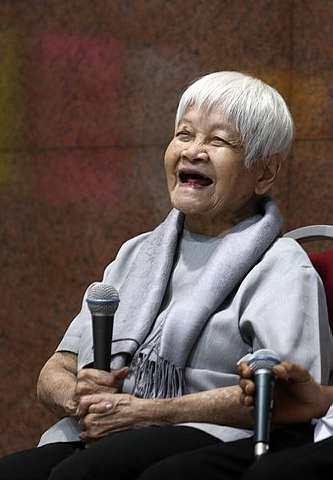
Teresa Hsu
By K. Kaewuni Dewi
CENTENARIAN Teresa Hsu kept some 200 people in stitches during her talk on ‘Love All Serve All’ at the Malaysian Buddhist Association hall in Penang last Friday.
For the bubbly Chinese-born Singaporean, who is affectionately known as Singapore’s Mother Teresa, laughter is definitely the best medicine.
Born in 1898, the 112-year-old social worker extraordinaire keeps young and active by happily doing charity work.
Kicking off the question and answer session Hsu said she was born “very, very poor” and the toughest part of her life was when she had to pick grass to eat as she was “very, very hungry”.
“It was at that moment I thought to myself that no one should ever go through what I went through,” she said.
When asked the secret to her longevity and good health, Hsu responded, “Ha, ha, ha! Make sure your heart is always happy”
She also said eating one raw egg every day for breakfast could be another reason for her good health.
“Once someone told me that raw egg is poisonous to which I replied ‘never mind, I thrive on poison’,” she said....
- Bookmark :
- Digg
- del.icio.us
- Stumbleupon
- Redit it
- Posted by - (1) Comment
Amrita Nadi: When researching for the Wisdom of Laughter Album (soon coming), I had delight of "meeting" Teresa Hsu, 112 years old, who inspires with her simple messages of joy. "if you love everybody with all the love in your heart, then you’ll be happy, ha, ha, ha,” Below is a wonderful report on her meeting with an audience in 2010, from the blog of Tsem Tulku Rinpoche
The power of laughter

Teresa Hsu
By K. Kaewuni Dewi
CENTENARIAN Teresa Hsu kept some 200 people in stitches during her talk on ‘Love All Serve All’ at the Malaysian Buddhist Association hall in Penang last Friday.
For the bubbly Chinese-born Singaporean, who is affectionately known as Singapore’s Mother Teresa, laughter is definitely the best medicine.
Born in 1898, the 112-year-old social worker extraordinaire keeps young and active by happily doing charity work.
Kicking off the question and answer session Hsu said she was born “very, very poor” and the toughest part of her life was when she had to pick grass to eat as she was “very, very hungry”.
“It was at that moment I thought to myself that no one should ever go through what I went through,” she said.
When asked the secret to her longevity and good health, Hsu responded, “Ha, ha, ha! Make sure your heart is always happy”
She also said eating one raw egg every day for breakfast could be another reason for her good health.
“Once someone told me that raw egg is poisonous to which I replied ‘never mind, I thrive on poison’,” she said....
Having witnessed the suffering of the wounded during World War II, she recognised a calling to serve and at the age of 47, managed to convince the London Nursing College to accept her as a mature student.
She subsequently travelled around Europe to help the sick and needy and was even invited by German Jewish refugees to work in a hospital in Paraguay.
In 1961, Hsu arrived in Singapore to care for her ailing mother and founded the Home for the Aged Sick in Singapore. She has since made the republic her home.
In 2005, Hsu received the Special Recognition Award from the Singapore Government in recognition of her contribution to the country.
Hsu had the audience laughing with her sharp and witty answers to questions. When asked whether she had ever fallen sick, she quipped, “The sick demons forgot to visit me.”
Hsu also imparted words of wisdom to the audience by telling them that when somebody says anything unpleasant, just don’t listen.
“If someone also says they are not happy, go all out to make them happy because if you love everybody with all the love in your heart, then you’ll be happy, ha, ha, ha,” she laughed.
On death, Hsu said she normally does not console the relatives of the deceased but instead makes them laugh.
She told the audience how she got a lady whose uncle had died to laugh and sing along to a Cantonese kindergarten song, and soon had the audience singing, clapping and laughing.
Hsu also said whenever she was faced with a problem, she would try to solve it but if she could not, then she just accepted it.
To another question, she said she wasn’t born naturally caring but shared an incident that deeply affected and changed her. Her late mother once dug up potatoes to feed the family but gave away the entire pot to a starving beggar who arrived at their doorstep with a child.
“That was the day I learnt that to give what you have in your hand to others is a great blessing,” she said.
When asked how important religion was to her, Hsu said, “Nobody ever told me what a religion was”.
She cited an incident when a Buddhist man and a Christian lady were arguing and singing praises about their respective religions.
She told them, “Brother and sister, there’s just one door”.
She added: "Everyone is my brother and sister. My religion is Love."
----------------
© 1995-2010 Star Publications (Malaysia) Bhd (Co No 10894-D)
- Bookmark :
- Digg
- del.icio.us
- Stumbleupon
- Redit it
Senator McCain in Vilnius
- Posted by - (0) Comment


Senator John McCain with Vilnius University rector Benediktas Juodka and President Dalia Grybauskaite.
In Vilnius Republican US Senator John McCain urged the international community to keep up a wave of pressure on authorities in Ukraine and Belarus for persecuting opposition figures.
Describing recent photos of Ukraine's jailed ex-premier Yulia Tymoshenko "disturbing, troubling", McCain said Kiev could not hope for closer ties with the West before it ends the "selective prosecution of its political opponents and unconditionally pardons opposition leaders."
"The current government seeks to move the country closer to Europe, at the same time as it pressures and destroys political opposition within Ukraine," McCain said during a visit to the ex-Soviet Baltic EU state of Lithuania.
"Ultimately, however, it must choose between these two contradictory paths," he said in a speech at Vilnius University, ahead of Thursday's international democracy conference.
McCain also said applying "more pressure than ever" has borne fruit in another ex-Soviet country, Belarus, which last month freed opposition figures Andrei Sannikov and Dmitry Bondarenko.
McCain however warned "now it's not the time to reduce the pressure on (President Alexander) Lukashenko," often dubbed "Europe's last dictator" by Western leaders.
"The United States and the EU must continue to strengthen our common front in pressuring Lukashenko to release political prisoners and hold free and fair elections," he said.
- Bookmark :
- Digg
- del.icio.us
- Stumbleupon
- Redit it
VilNews e-magazine is published in Vilnius, Lithuania. Editor-in-Chief: Mr. Aage Myhre. Inquires to the editors: editor@VilNews.com.
Code of Ethics: See Section 2 – about VilNews. VilNews is not responsible for content on external links/web pages.
HOW TO ADVERTISE IN VILNEWS.
All content is copyrighted © 2011. UAB ‘VilNews’.

 Click on the buttons to open and read each of VilNews' 18 sub-sections
Click on the buttons to open and read each of VilNews' 18 sub-sections 




























































































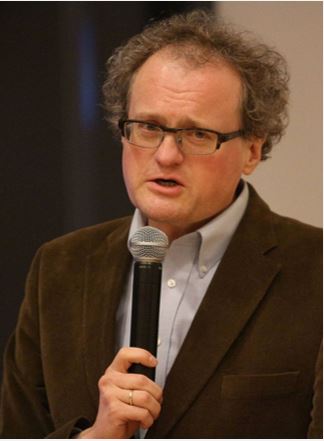
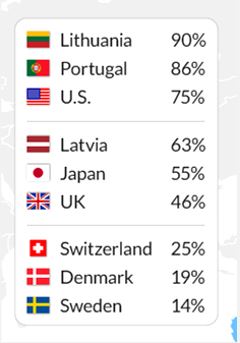
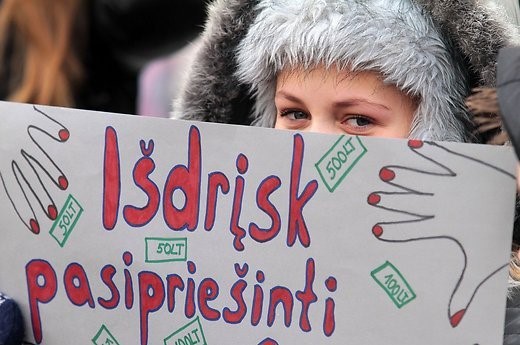


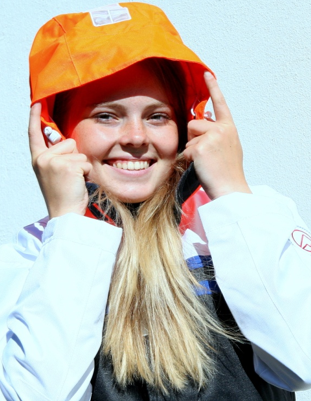
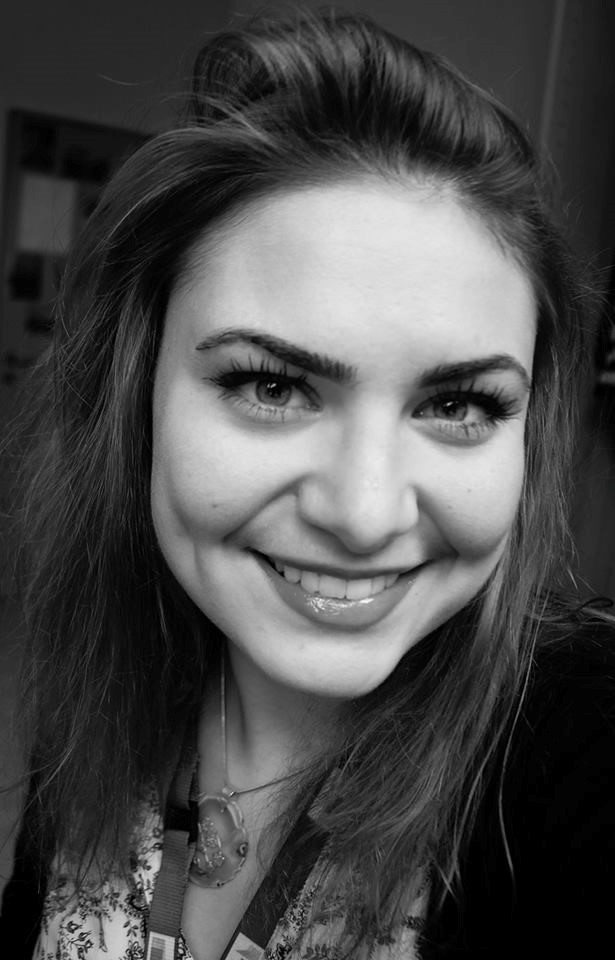
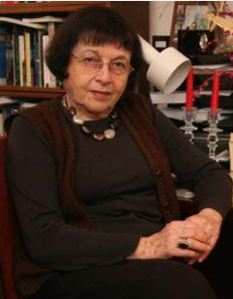
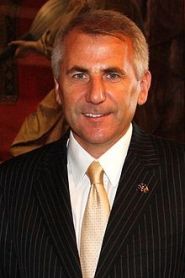
.jpg)
